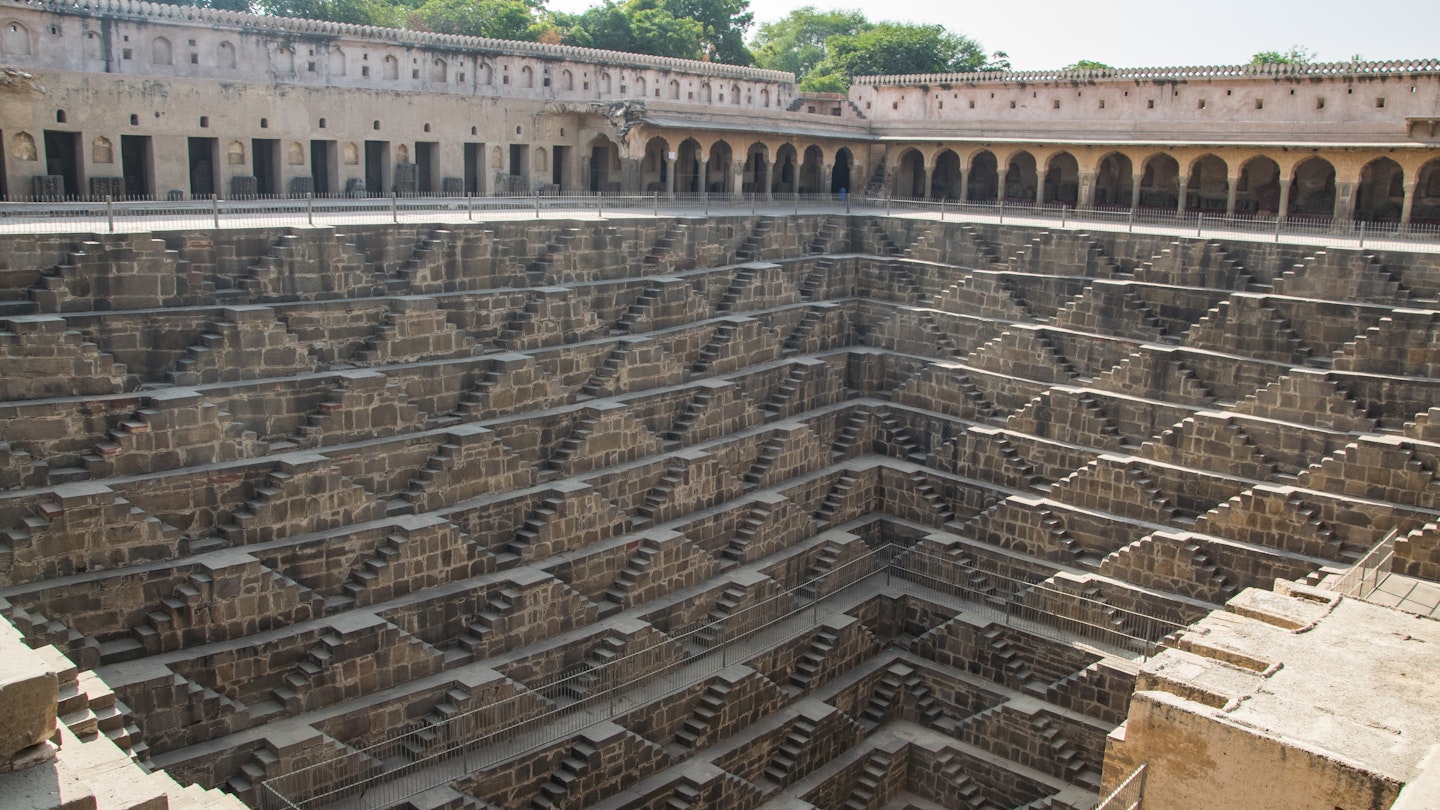Exploring the Architectural Marvels of India’s Stepwells
Every great civilization has contributed something special to the pantheon of world architecture. Egypt gave the world pyramids, Greece provided Corinthian columns, and India presented stepwells, transforming the essential task of collecting water into an extravagant piece of public architecture.
Known variously as baoris, baolis, and vavs, stepwells were designed to manage water efficiently across changing seasons, enabling access through cascading terraces regardless of water levels. Reflecting the critical role of water in monsoon-dependent India, most stepwells are lavishly adorned, complete with niches and pavilions for bathing, swimming, performing religious rituals, and enjoying the natural cooling effect of stored water.
Today, these stunning structures, whether abandoned or still in use, can be found throughout India, predominantly in the northern regions, often away from mainstream tourist paths. Here’s a curated list of seven of the most remarkable stepwells, alongside tips for visiting these historical gems.
1. Chand Baori, Abhaneri, Rajasthan

Perhaps the most impressive of all India’s stepwells, Chand Baori boasts a staggering array of 3,500 steps cascading down the sides of a vast central tank, featuring a unique criss-cross pattern that resembles a cut diamond—13 stories deep and 35 meters wide.
The lower levels were constructed by the Hindu king Raja Chanda in the 9th century, while the Mughals enhanced the upper sections with luxurious pavilions and arcades in the 18th century, giving it a distinctive architectural blend. Chand Baori even appeared in a notable scene in the 2012 film “The Dark Knight Rises.”
2. Rani-ki-Vav, Patan, Gujarat

Rani-ki-Vav stands as a magnificent remnant from the powerful Chaulukya kingdom of the 11th century. This stepwell features a stunning series of intricately carved tiers that exhibit high artistry, commissioned by Udayamati, the wife of king Bhimdev I.
Its preservation owes much to a natural disaster that concealed it under silt for centuries; it was rediscovered in the 1940s. Now a UNESCO World Heritage site, Rani-ki-Vav captivates visitors with its elaborate depictions of Vishnu and other deities adorning its walls.
3. Agrasen Ki Baoli, Delhi

This often-overlooked landmark is unexpectedly nestled in the heart of New Delhi, just steps away from the vibrant Connaught Place. The stepwell, measuring 60 meters in length, features Islamic arches and is accessed via a broad, sweeping staircase.
Constructed during the Tughlaq period of the 14th century, this intriguing site is enveloped in local legends, including tales of hauntings, making it a popular spot for both tourists and photographers.
4. Adalaj Vav, Adalaj, Gujarat

Though smaller than Rani-ki-Vav, the 15th-century Adalaj Vav is a masterpiece that enchants visitors with its elegant columned arcades and an octagonal well shaft enveloped in delicate carvings of flowers, elephants, and deities.
Constructed by the sultan Mahmud Begada, it is steeped in legend, with stories suggesting that the dedication to craftsmanship was met with dire consequences for the masons who built it.
5. The Pushkarinis of Hampi, Karnataka

While stepwells are primarily associated with northern India, Hampi features ceremonial tanks, known as pushkarinis, demonstrating this architectural style. The royal enclosure houses the Stepped Tank, stripped of its upper structures but still showing off its iconic pyramid-shaped stairs.
The site, alongside other notable ruins like the Elephant Stables, conveys the ceremonial lifestyles of Hampi’s ancient rulers effectively.
6. Rajon Ki Baoli, Delhi

Another striking stepwell in Delhi, Rajon Ki Baoli is situated within the largely unexplored Mehrauli Archaeological Zone. The waterhole is enveloped in an atmosphere of calmness, often avoided by tourists heading to nearby attractions.
This fascinating site features Islamic architectural elements and is credited to Daulat Khan from the Lodi Dynasty in the early 16th century, bearing witness to the grandeur of that era.
7. Surya Kund Stepwell, Modhera, Gujarat

The impressive 11th-century Sun Temple at Modhera serves as a homage to the Solanki dynasty. The temple’s design allows the dawn sun to illuminate the inner sanctum during equinoxes, symbolizing a connection to the sun.
Situated right next to Surya Kund, this extensive stepwell contains over 100 miniature temples and shrines, presenting a unique artistic collection in a sunken format. It reflects the engineering brilliance of the time.





